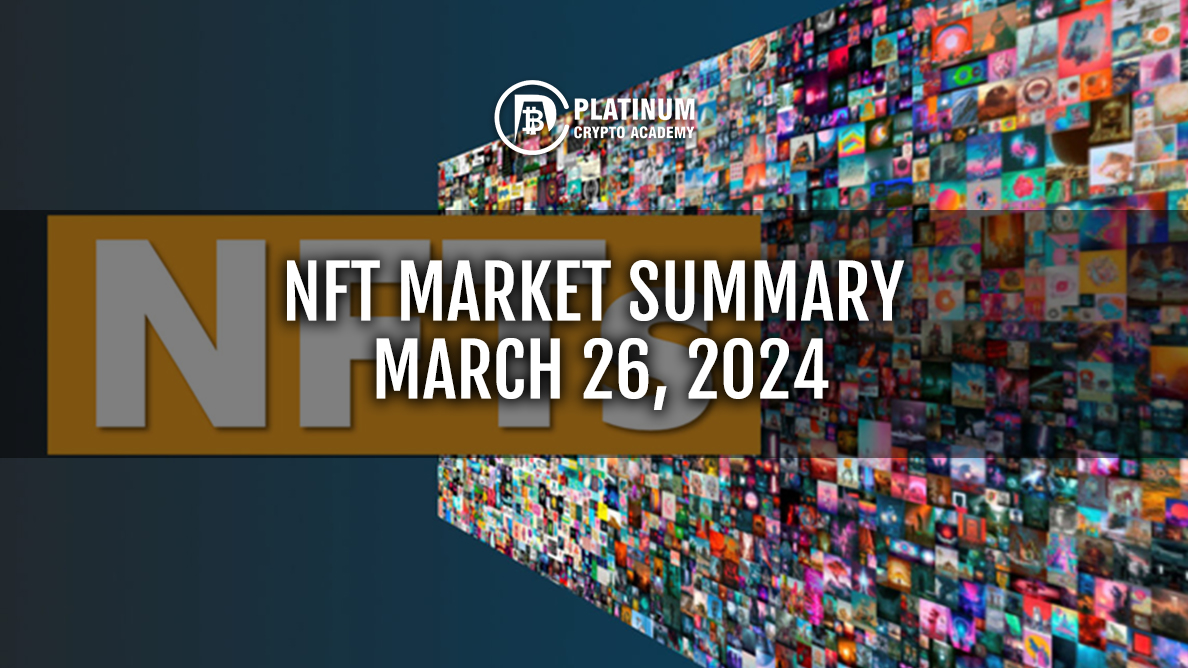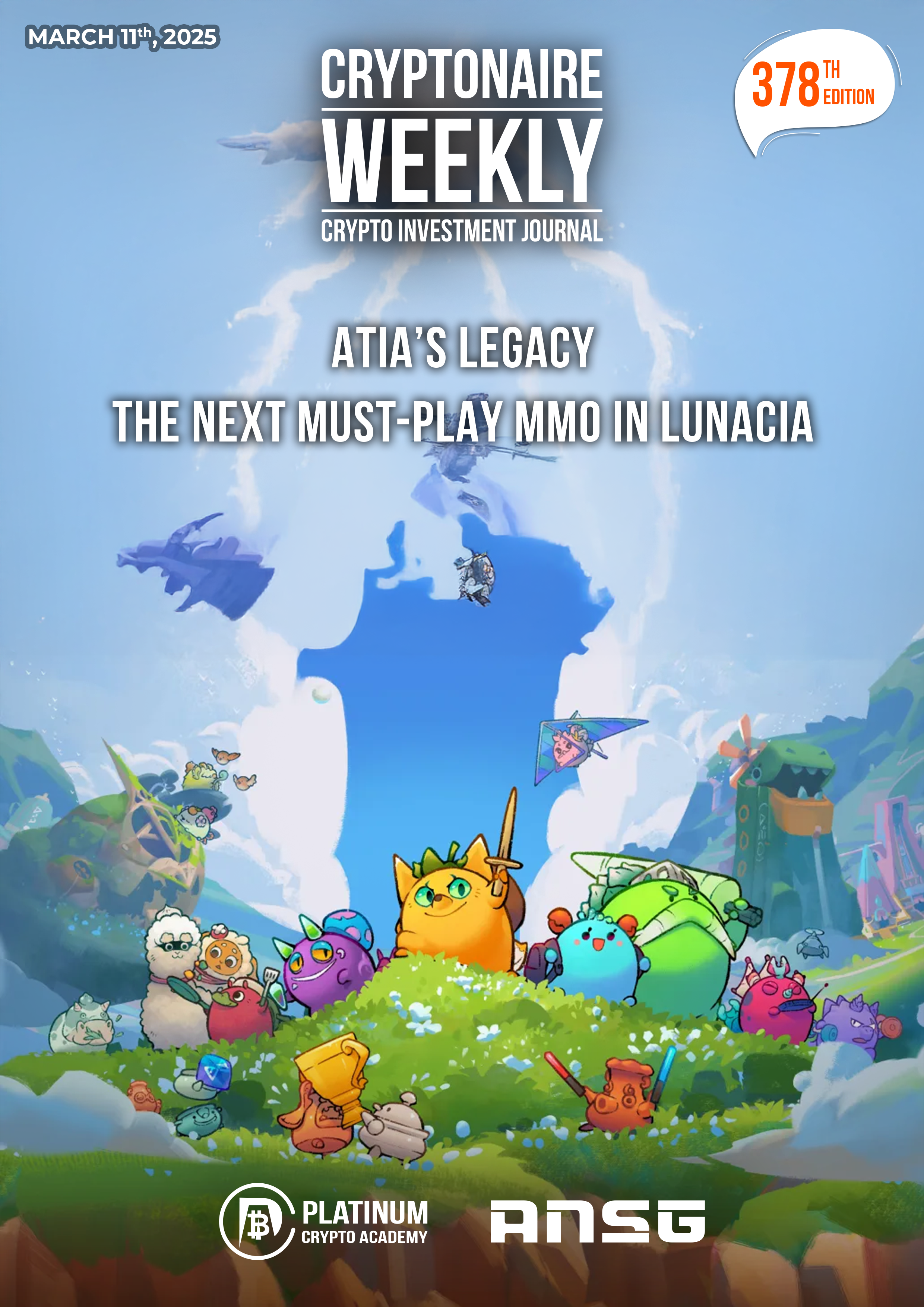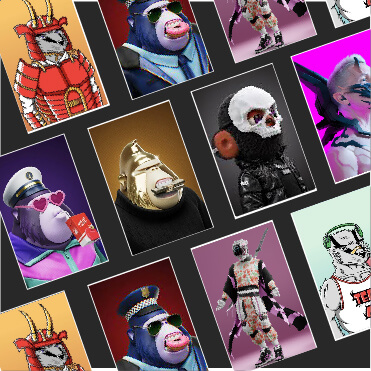Understanding why people are willing to spend large sums on digital images or invest significant time pursuing opportunities on platforms like Discord can be challenging for skeptics. However, we encourage skeptics to broaden their perspective and explore the underlying value and potential of NFTs.
NFTs have revolutionized the concept of digital ownership, marking a significant shift from Web 2.0 to Web 3.0. As society becomes increasingly immersed in digital activities, the ability to authenticate the scarcity of digital assets for the first time holds the promise of a fundamental transition from physical to digital ownership.
In this segment, we will delve into the latest developments in the NFT market, fundraising initiatives, and emerging trends within the sector. Within the metaverse, NFTs offer significant potential, serving as a means to establish asset ownership, scarcity, and content monetization. While challenges such as ownership representation and inflationary pressures persist, efforts are underway to address these issues. If these challenges can be overcome, NFTs are poised to have a profound impact on the future of virtual environments.
NFT Market Trends Analysis
Despite encountering a noticeable drop in trading volume during June, the NFT market exhibited resilience in the first half of 2023. The year commenced with a robust start for NFTs, witnessing a surge in trading activity propelled by the launch of the LooksRare and X2Y2 marketplaces, accompanied by their enticing trading rewards.
In 2023, NFT sales amassed around $17.7 billion, a figure akin to the sales figures of 2021. This signifies an impressive nearly tenfold increase compared to the preceding year.
However, the majority of trading volume was concentrated in the earlier months, with a substantial portion of sales occurring during this period. June witnessed a sharp downturn in trading volume, plummeting by over 80% in contrast to the average monthly trading volume of $3.4 billion recorded from January to May.
Upon closer scrutiny of the underlying factors, the robust performance in the first half of the year was fueled by healthy growth in terms of unique buyers and transaction numbers, albeit offset by a decline in the average sale price.
This decline in the average sale price can be attributed to the downward trajectory observed in cryptocurrency prices over recent months, resulting in reduced NFT sale prices when denominated in USD.
The Metaverse NFT market revolves around the trading of non-fungible tokens within virtual realms or immersive digital landscapes. This market has attracted considerable attention lately, propelled by the growing fascination with the Metaverse—a shared virtual realm blending elements of physical and digital spaces.
As per a Market Research Future (MRFR) report, the NFT market is poised to exceed USD 342.54 billion by 2032, with an anticipated Compound Annual Growth Rate (CAGR) of 27.6% by the same year. This growth is driven by the escalating global appetite for digital art and the widespread adoption of cryptocurrency.
Forecasts indicate a steady ascent in the global Metaverse Market, with a projected Compound Annual Growth Rate (CAGR) of 47.2% from 2023 to 2027. This trajectory is expected to propel industry spending from $61.8 billion in 2022 to around $426.9 billion by the end of 2027.
Within the Metaverse NFT market, a diverse array of digital assets are traded, spanning virtual real estate, avatars, artwork, and virtual fashion. The market’s expansion is fueled by several growth catalysts, including the burgeoning adoption of blockchain technology, the surging popularity of gaming and virtual realms, and the growing appetite for unique and scarce digital assets.
Moreover, the Metaverse NFT market presents fresh opportunities for creators, artists, and gamers to monetize their digital works. It also offers investors avenues to broaden their portfolios by investing in these unique assets.
NFT Price Performance
Year-to-date, NFTs have shown a negative performance when measured in USD terms, largely due to a decrease in ETH prices. To monitor overall market activity, our analysis relies on the Nansen NFT-500 index, which includes the top 500 Ethereum NFT collections weighted by market capitalization.
While the Nansen NFT-500 index offers valuable insights, it’s important to recognize its limitations, as it doesn’t cover all NFT collections, particularly those not Ethereum-based. Nevertheless, Ethereum-based NFTs dominate the market, representing over 80% of secondary trading volume, making the index a reliable indicator of the NFT market.
The NFT-500 index has recorded a -69% return in USD terms, mainly driven by a 71% decline in ETH prices during the same period. However, when excluding the effects of the ETH price decline, the asset class has demonstrated a +8.3% return when denominated in ETH.
This performance is noteworthy, particularly amid the prevailing bearish market sentiment. Opting to invest in NFTs rather than holding ETH would have partially mitigated portfolio losses, underscoring the potential diversification advantages of NFT investments.
NFTs: Exceptional Digital Assets
In the digital sphere, replicating entities is typically effortless, leading to perfect copies. However, NFTs, known as non-fungible tokens, distinguish themselves as singular digital items. Each NFT is intricately linked to the blockchain, guaranteeing its authenticity and individuality.
NFTs demonstrate their versatility across various crypto projects, showcasing their diverse applications. For instance, Decentraland, a metaverse virtual world, boasts a thriving industry centered around NFT land sales. Similarly, Axie Infinity incorporates unique virtual animals as NFTs, enabling users to nurture or trade them within the game ecosystem.
While NFT performance showed negativity when measured in USD terms, it exhibited positivity when evaluated in ETH.
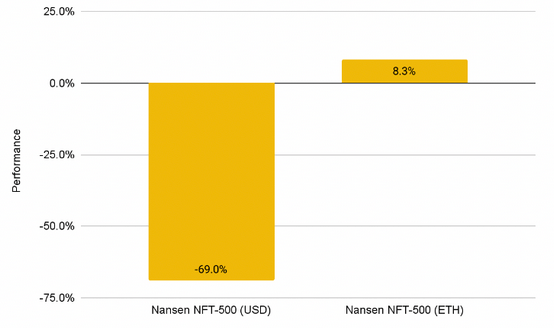
The optimistic performance in terms of ETH may have been influenced by positive investor sentiment spurred by specific NFT-related events in the latter part of June. These events, such as the NFT.NYC conference and notable acquisitions and fundraising activities, likely contributed to a shift in momentum. Prior to these occurrences, the NFT index had been in negative territory but showed signs of improvement towards the end of the month.
Role of NFT Marketplaces
NFT marketplaces play a pivotal role in facilitating trading activities by connecting buyers and sellers. OpenSea continues to dominate the NFT marketplace, accounting for approximately 50% of the market share.
Despite OpenSea’s sustained dominance over the past year, the market has become increasingly competitive. New entrants like LooksRare, X2Y2, and Magic Eden have demonstrated robust performance, challenging the established norms.
While OpenSea remains the primary leader in terms of market share, X2Y2 has emerged as a strong competitor, signaling a shifting landscape in the NFT marketplace.
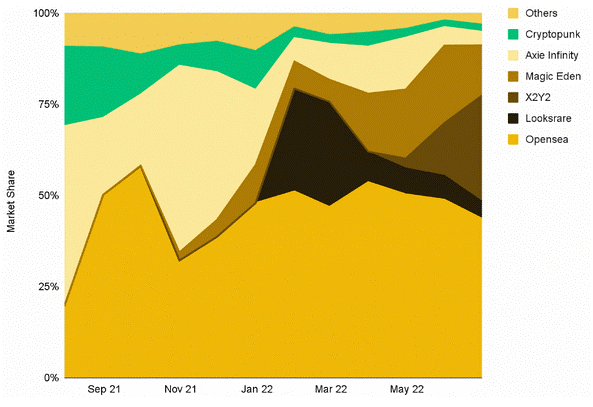
The Rise of NFT Aggregators
Between 2022 and 2023, NFT aggregators emerged as a prominent trend, offering traders the convenience of buying and selling NFTs across multiple platforms from a single interface, akin to the functionality provided by Skyscanner for flight bookings. This feature resonates well with the general trading habits of users.
For the majority of NFT traders, the priority lies in acquiring their desired NFTs at the most competitive prices, with platform preference taking a back seat. Consequently, NFT aggregators capitalize on this preference by aggregating listings from various marketplaces and presenting them in a unified platform.
Furthermore, NFT aggregators add value by enabling traders to efficiently browse collections and identify the most attractively priced NFTs without the need to navigate through individual marketplaces.
Leading aggregators such as Gem and Genie have witnessed substantial growth, with a combined trading volume exceeding 511,000 ETH in the current year alone. This represents a remarkable 21-fold increase compared to figures recorded in 2021.
Moreover, the market share of NFT aggregators has expanded significantly, rising from just over 1% at the end of 2021 to approximately 5% at present. It’s worth noting that these percentages are based on monthly data snapshots and may fluctuate based on daily trading activity.
While the market share of NFT aggregators remains relatively modest, recent acquisitions like Gem by OpenSea and Genie by Uniswap highlight the substantial interest that industry leaders have in NFT aggregators. These acquisitions also affirm the value proposition offered by NFT aggregators, indicating their potential to have a significant impact on the NFT trading ecosystem in the long run.
The allure of using NFT aggregators is likely to grow as competition intensifies among NFT marketplaces and liquidity becomes more fragmented. With the convenience of accessing multiple marketplaces and discovering the best-priced NFTs through a single platform, users may be more inclined to embrace NFT aggregators. However, widespread adoption of these platforms may take time to materialize, as many NFT listings currently originate from a select few marketplaces such as OpenSea, X2Y2, and LooksRare. Consequently, traders may still find it manageable to monitor one or two exchanges before executing a trade.
Looking forward, the NFT market is poised for significant transformations in 2024, with several emerging trends expected to shape its trajectory.
Here are some noteworthy trends and advancements shaping the NFT landscape:
Integration into the Metaverse:
NFTs are set to become central to the Metaverse, with growing adoption for virtual real estate and in-game assets. Collaborations between NFT creators and Metaverse platforms will redefine digital interactions, offering immersive experiences that blur the lines between the physical and virtual worlds.
Evolution towards Dynamic NFTs:
Moving beyond static images, there is a shift towards dynamic NFTs that evolve over time, featuring changing visuals, adaptive functionalities, and evolving narratives. This dynamic aspect enhances engagement and fosters a more participatory ecosystem.
Rise of Social Tokenization:
Creators and influencers are tokenizing their presence, offering exclusive content, experiences, and even governance rights to their communities. Social tokens empower creators to cultivate loyal followings while allowing fans to have a stake in their favorite projects.
Integration of AI-Generated NFTs:
Artificial intelligence is expected to play a significant role in NFT creation, with machine creativity generating unique digital assets. This fusion of human creativity and AI innovation will lead to the emergence of innovative digital art pieces.
Focus on Cross-Chain NFTs:
Interoperability will be emphasized, with cross-chain NFTs enabling seamless movement of digital assets across different blockchain networks. This interoperability enhances liquidity and broadens market accessibility.
Emphasis on Environmental Consciousness:
The NFT community is increasingly prioritizing eco-friendly solutions, focusing on blockchain technologies with reduced energy consumption and carbon footprints.
Enhancements in AR and VR:
Augmented and virtual reality technologies will be integrated with NFTs, providing collectors with immersive experiences to interact with their digital assets in both real-world and virtual environments.
Expansion of Marketplaces and Aggregators:
NFT marketplaces, including both traditional and white-label platforms, are garnering attention from businesses and investors as lucrative platforms for revenue generation and brand visibility.
Introduction of Fractional NFTs:
Subdivided tokens aim to increase user participation and facilitate fund redistribution across various assets, drawing inspiration from shared ownership models in real estate and stocks.
Utilization of NFTs for Memberships:
NFTs are being utilized for memberships, offering exclusive access, voting rights, and enhanced user experiences through blockchain security.
Transformation of NFT Gaming:
NFTs have transformed the gaming industry by introducing unique methods to convey ownership and scarcity of in-game assets.
Development of Layer-2 NFT Solutions:
Addressing network congestion challenges, these solutions built atop Layer-1 blockchains enhance scalability, security, and reduce transaction costs.
Innovation in Carbon Credit NFTs:
Representing an innovative approach to environmental sustainability, these NFTs verify offsetting carbon emissions and are gaining traction for their role in demonstrating environmental impact mitigation.
Wrap Up
To sum up, the NFT market is undergoing significant changes in 2024, spurred by technological advancements and shifting consumer preferences. From integrating NFTs into the Metaverse to the emergence of dynamic and AI-generated NFTs, the landscape is evolving rapidly. Moreover, there’s a growing focus on environmental sustainability, interoperability, and improving user experiences, reshaping how NFTs are created, traded, and utilized.
As NFTs gain traction across diverse industries like gaming, art, and social media, their permanence becomes evident. The rise of new trends such as cross-chain NFTs, social tokenization, and layer-2 solutions highlights the potential for further innovation and expansion in the market.
In essence, the dynamic nature of the NFT market in 2024 presents opportunities for creators, investors, and consumers alike. By keeping pace with these trends and embracing the potential of NFT technology, stakeholders can position themselves to thrive in this ever-evolving landscape.

